- europages
- >
- COMPANIES - SUPPLIERS - SERVICE PROVIDERS
- >
- uv tests
Results for
Uv tests - Import export
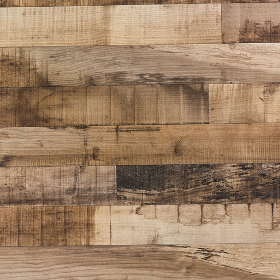
A.B.C. WORLDWIDE GMBH
Germany
Tabletop Serapal Slim 401 Norway Maple Weatherproof Heat-resistant UV-resistant TÜV tested Available in the different measures
Request for a quote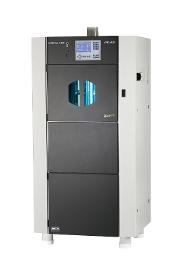
ATLAS MATERIAL TESTING TECHNOLOGY GMBH
Germany
The Xenotest 440 is a highly versatile xenon weathering instrument for a variety of materials. Designed for fast and economical testing, the Xenotest 440 utilizes XenoLogic™, a revolutionary new twin-lamp operating technology which enables high irradiance levels of 120 W/m 2 of total UV radiation. In addition, XenoLogic provides extended lamp service life. With this new technology, the two xenon lamps combined can last over 4000 hours under standard testing levels of 40-60 W/m 2. 2 x 2200W air-cooled xenon lamps 2310 cm 2 exposure area XenoLogic TM lamp operating technology for extended lamp service life Touch screen with color display to monitor and display test parameters Direct Setting and Control of Irradiance (300-400 nm) Direct Setting and Control of Black Standard Temperature (BST) Direct Setting and Control of Chamber Temperature (CHT) Direct Setting and Control of Relative Humidity Display of Diagnostic Messages Storage for 10 user-defined tests Multi-Language Capability: English, German, Italian, French, Spanish, Turkish, Dutch, Polish, Hungarian, Czech, Japanese, Korean, Chinese On-rack XENOSENSIV® RC-34 BST for measuring and controlling irradiance (in W/m²) in the wavelength range 300-400 nm and BST (°C) on specimen level Selectable temperature control either by Chamber Temperature (up to 65 °C) or by Dual Control: Chamber Temperature and Black Standard Temperature (up to 115 °C) simultaneously Fan-controlled temperature difference between BST and CHT Ultrasonic humidifier controlling relative humidity in the range 10-75% (Light cycle) Integrated 60 litre water reservoir for humidity control and specimen spray (automatic refill) Specimen spray system Rotating specimen rack with 38 test positions (13.5 cm x 4.5 cm); 33 (10.0 cm x 6.8 cm); 22 (13.5 cm x 5.5 cm); 11 (29.5 cm x 7.0 cm) Pre-programmed lightfastness and weathering standards Outer cylinder made of special UV glass UV-protected test chamber window Internal memory chip for storing instrument data Data output via Memory Card or serial interface RS232 Ethernet interface for XenoTouch Add-ons (Remote Control, E-Mail Service, Online Monitoring) XENOSENSIV RC-420 BPT
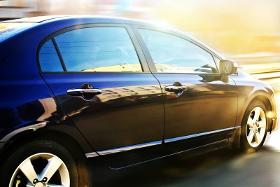
ATLAS MATERIAL TESTING TECHNOLOGY GMBH
Germany
Degradation and Heat Sunlight can have adverse affects on materials and components, oftentimes initiating and accelerating the degradation process as it interacts with temperature, moisture and other environmental effects. In addition, it is critical to understand the effects of heat created by sunlight with respect to operational performance, thermal management, noise and dimensional stability. A new product should be tested under solar environmental conditions representative of those locations in which it will exist - anywhere ranging from the heat of the outback in Australia to the frigid climate of arctic areas. Atlas solar simulation systems are custom-designed in both power and size. Having this flexibility, they can be integrated into various types of environmental test chambers whether they be small or walk-in, chambers used in component/ small product testing or drive-in chambers for complete vehicle testing, even up to extra large systems for trains, trucks and aircrafts. Superior Solar Simulation with SolarConstant A key to the success of solar environmental testing is the quality of the solar simulation itself. A close spectral match to natural sunlight is critical for accurate reproduction of test conditions. The Atlas SolarConstant luminaire offers high irradiance efficiency and superior spatial uniformity on the test area. Combined with special Metal Halide Global (MHG) lamps and optical filters, the SolarConstant creates a spectral distribution that closely matches natural sunlight. Its proven modular design makes this unit ideal for large custom-designed solar simulators as well as smaller standardized laboratory test systems. SolarConstant Serving Global Testing Needs SolarConstant products are designed to meet a large number of standards as well as industry test methods such as DIN 75220, MIL-STD-810, IEC 61215, IEC 904-9, EPA 40-CFR/ SC03, BMW PR306.5, Renault 32-00-022, Telcordia GR-487-CORE and others. Atlas offers a complete series of SolarConstant luminaires to satisfy an array of global testing needs: SolarConstant MHG 4000/2500/1200/575: These luminaires utilize Metal Halide Global technology for full-spectrum solar simulation. Optical filters adjust the output for the best match to natural indoor/outdoor sunlight. They are ideal for solar simulators used to determine thermal heating effects of solar radiation such as fit and finish, dimensional stability or thermal transmission. They are also suited for identifying photodegradation effects of polymers and coatings such as cracking, color fading and other failures, or testing PV module performance. SolarConstant MIL: These luminaires utilize Metal Halide Global technology combined with a unique "multi-level" output for full-spectrum solar simulation. Especially useful for satisfying stringent MIL-STD-810G method 505.5 (Procedure I) - determination of heat produced by 24-hour cycles of solar radiation. It is also ideal for agro-science requiring diurnal cycles, e.g. plant growth studies and others. SolarConstant MH 1500/1200/1000: These luminaires utilize Metal Halide technology for specific high-UV level testing or to meet limited budget applications. Solar Constant UV 2000: These luminaires utilize Mercury technology for creating UV radiation (280 - 400 nm) and are used to study photo-aging effects caused by solar UV radiation only. In addition to the SolarConstant line of products, Atlas comolements its luminaire portfolio with Halogen technology for visible (VIS) and heat radiation (IR). IR-luminaires with 2000W / 1500 W are used to set up high-performance systems for testing heating effects similar to heating caused by sunligt. In addition to the SolarConstant line of products, Atlas comolements its luminaire portfolio with Halogen technology for visible (VIS) and heat radiation (IR). IR-luminaires with 2000W / 1500 W are used to set up high-performance systems for testing heating effects similar to heating caused by sunligt. From Outdoor Data to Laboratory Testing No environmental laboratory test is complete withut the confirmation and correlation to natural conditions. Atlas operates a number of outdoor exposure sites in key climate zones worldwide and can produce the natural exposure data you need. Using our expertise in both outdoor and accelerated testing, Atlas can assist you in reproducing outdoor conditions in your laboratory enabling your testing to reliable, fast and as realistic as possible. Test Chamber Examples Atlas has installed over 100 systems worldwide and is a leader in combining the technologies of testing with solar simulation. Below are examples of the most common test chambers with solar simulators: Climate test chamber with wind tunnel and solar simulator Climate test chamber with dynamometer and solar simulator Solar heat load test chamber with solar day cycling Climate test chamber with dynamic road simulation and solar simulator Custom solar simulator for PV module testing, Light Soak testing, I/V curve tracing Solar environmental Walk-in test chamber for component / product testing Atlas CESORA Atlas' CESORA (Calculation of Effective Solar radiation) software is extremely useful in the absence of measured outdoor data. With CESORA, you can calculate effective solar radiation for any time, day, month or year on any titled surface over any spectral range from 250-3000 nm. Positioning System To allow the SolarConstant solar simulator to move and replicate various natural solar conditions, a mechanical positioning system is typically installed. This enables motorized movement of the solar array within all desired spatial directions to simulate solar day cycles for example. Atlas offers both low-cost manual remote controls or full automatic alternatives that are integrated into the Atlas software. Positioning systems are typically customized towards the application and local test facility. Atlas will work with you to define the SolarConstant positioning system that will work best for you. Control System The operation of the SolarConstant system is handled by a dedicated operator interface. Atlas provides tailored menu-driven software for the programming and operation of each solar simulation system. Any solar simulation profile - for example morning, noon, afternoon, etc. can be stored and combined with various types of programmed test sequences for a complete integrated test program. For seamless operator interface, the Atlas designed solar control interface can be linked to the master IT environment of the test facility. We believe that a strong grasp of our customers' requirements is a key factor in developing a solution tailored to their needs. In order to simplify initial communications and understand your requirements more easily, please fill out the provided questionnaire under 'Downloads' and fax it back to +49-6105-9128-80.

ATLAS MATERIAL TESTING TECHNOLOGY GMBH
Germany
The 220 is a large capacity lightfastness tester dedicated for textile testing. It comes with premium on-rack light and temperature sensor and non-aging optical filter technology. With the ability to test 38 samples, the 220 provides nearly twice as much capacity in the same footprint compared to 150S+. The combination of its large test chamber and the efficient use of power and water make it today’s most economic air-cooled instrument available. It complies to standards ISO 105 B02, AATCC TM16 (option 3), and Marks & Spencer C9, C9A. 1x 2200 W air-cooled Xenon Lamp 2310 cm 2 exposure area Touch screen with colour display to monitor and display test parameters Direct Setting and Control of Irradiance (300-400 nm) Direct Setting and Control of Black Standard Temperature Direct Setting and Control of Chamber Temperature Direct Setting and Control of Relative Humidity Display of Diagnostic Message Storage for 10 user-defined tests Multilingual User Interface Non-aging filter systems for ISO 105-B02 and AATCC TM16 On-rack XENOSENSIV® for measuring and controlling irradiance (in W/m²) and Black Standard Temperature on sample level Selectable temperature control either by Chamber Temperature (up to 65 °C) or by Dual Control: Chamber Temperature and Black Standard Temperature (up to 100 °C) simultaneously Fan-controlled temperature difference between Chamber and Black Standard Temperature Ultrasonic humidification system with integrated 60l water reservoir for humidity control (automatic refill) Sample rack suiting 19 sample holders with capacity for 38 standard textile samples Pre-programmed standards ISO 105 B02 and AATCC TM16-2004 (Option 3) Switch-off by radiant exposure, light exposure or total operating time UV-protected test chamber window Advanced Auto Start functions Internal memory chip for storing instrument data Data output via Memory Card or RS 232 Ethernet interface plus XenoTouch Add-ons 1, 2, and 3 (“Remote Control“, “E-Mail Service“, “Online Monitoring“) XenoCal BB 300-400 XenoCal BB 300-400 BST XenoCal BST
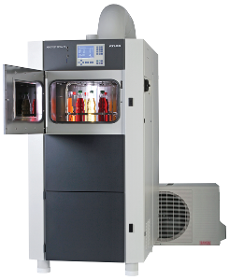
ATLAS MATERIAL TESTING TECHNOLOGY GMBH
Germany
The Xenotest Beta+ FD is a premium stand-alone rotating rack xenon instrument with 4000cm2 exposure area. It’s completely target designed to meet the testing needs of the FMCG industry, such as drinks, foodstuffs, personal care or household products. Beta+ FD enables consumer goods manufacturers to test their products realistically within very short test times, typically with acceleration factors between 10-50 versus real time. It’s for reliable qualification of stable product formulations, determination of appropriate packaging materials, and supporting product shelflife claims. Beta+ FD offers two custom racks - a bottle rack and a packagings rack. Both carry loads up to 20 kg and fit various packaging shapes and sizes. Economic non-aging filters guarantee realistic simulation of all three common light conditions - outdoor Daylight / indoor Daylight / Supermarket light, while a chiller keeps test temperatures on realistic levels even at high irradiance. Programming and monitoring can be done online. 3x 2200 W air-cooled Xenon Lamps 4000 cm 2 exposure area Touch screen with colour display to monitor and display test parameters Direct setting and control of Irradiance (300-400 nm) or (300-800 nm) Direct Setting and Control of Black Standard Temperature (BST) Direct Setting and Control of Chamber Temperature (CHT) Display of Diagnostic Messages Storage for 10 user-defined test methods Multilingual User Interface Test chamber with rotating rack technology; for application-specific specimen racks Thermal insulation of test chamber and periphery preventing water condensation Non-aging XENOCHROME filters to simulate outdoor daylight, daylight behind window Optional StoreLight filter to simulate supermarket light conditions On-rack XENOSENSIV 300-400 nm or 300-800 nm sensor for measuring and controlling irradiance (in W/m²) and BST (C°) on sample level Selectable Temperature control either by CHT (10° *- 70°C; *with chiller) or by CHT and BST (25° * - 120°C) simultaneously (dual control) Fan-controlled temperature difference between Chamber and Black Standard Temperature Chiller SunCool Beta+ for extended CHT- and BST-ranges towards lower temperatures UV-protected test chamber window Switch-off by radiant exposure, light exposure time or total operating time Advanced Auto Start functions Internal memory chip for storing instrument data Data output via memory card or RS 232 interface Ethernet interface for connection to internal computer network and use of XenoTouch Add-ons 1, 2, and 3 (“Remote Control“, “E-Mail Service“, “Online Monitoring“)
Do you sell or make similar products?
Sign up to europages and have your products listed

OPSYTEC DR. GRÖBEL GMBH
Germany
The UV test chamber BS-04 is large, robust equipment for the time- or dose-controlled irradiation of samples with UV light. The chamber can be fully equipped for one of the spectral regions UV-C, UV-B, or UV-A to achieve the highest irradiance. Alternately, the use of two separately controlled lamp groups for different spectral regions allows for especially flexible operation of the chamber. The interior irradiation chamber has a base area of 86 x 65 cm² and a height of 32 cm. The sliding sample carrier facilitates loading and unloading. With a load of up to 20 kg, this can withstand all demands. The sample chamber operating temperature is about 25°C so that thermal damage to the specimen is avoided. Due to the high uniformity of the irradiation, the samples may be positioned in any order. The BS-04 can be equipped with two irradiation controls: the UV-MAT and the UV-MAT Touch.
Request for a quote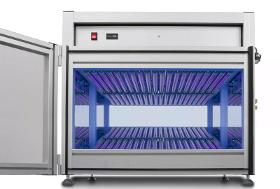
OPSYTEC DR. GRÖBEL GMBH
Germany
The 3D UV test chamber BS-05 is a large irradiation chamber for double-sided, 3D irradiation of samples with UV or visible light. A sample plate made of stainless steel or fused silica or a rotating holder for mixing of fluids are available. Like all BS irradiation chambers, the BS-05 offers time- and dose-controlled irradiation of samples with UV light. The chamber can be fully equipped for one of the spectral ranges UVC, UVB, or UVA to achieve the highest irradiance. Alternately, the use of two separately controlled lamp groups for different spectral ranges allows for especially flexible operation of the chamber. The large irradiation chamber of the test chamber has a base area of 86 x 65 cm² and a height of 32 cm. The maximum sample chamber temperature during operation is approx. 25 °C, so that thermal damage to the samples is avoided. Due to the high homogeneity of the irradiation, the samples can be positioned as required.
Request for a quote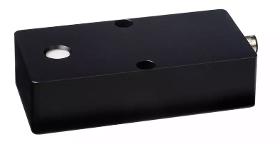
OPSYTEC DR. GRÖBEL GMBH
Germany
The PLC.D sensors are ready-to-install UV sensors with digital output. This enables reliable and repeatable irradiance measurements in UV systems. Due to the compact design and the eight spectral ranges, the sensors can be used for a wide range of applications, e.g. in packaging facilities sterilisation surface activation systems UV curing systems ageing tests and many other applications With the integrated 24-bit ADCs, the PLC.D sensors close the gap between industrial manufacturing and high-precision laboratory equipment. Measurements can be carried out in a simple yet safe way. RS-485 and USB are available as optional connections for this purpose. The data evaluation takes place directly in the PLC.D sensors, the measured values are protected against transmission errors by a CRC-16 check sums.
Request for a quote
OPSYTEC DR. GRÖBEL GMBH
Germany
The handheld UV lamps are high-powered UV radiation sources for UV-A and UV-C radiation. They enable the sensitive detection of luminescent substances through their high irradiance. The handheld UV lamps are available in three versions. UV-A and UV-C lamps are equipped with two UV lamps to obtain a very high intensity of irradiation on the sample. The UV-A/C handheld lamp allows the simultaneous or separate application of UV-A and UV-C radiation with the same device. All handheld UV lamps are mains operated and have VIS filters, which effectively filter the visible light from the tubes. Thus, even weak luminescence in the sample can be optimally detected. We recommend our additional stand to create a table lamp and have both hands free for testing. HIGHLIGHTS OF UV HAND-HELD LAMPS High irradiance of ~ 500 µW/cm² in a distance of 10 cm Filters for visible light from the tubes Weak luminescence can be detected Long lifetime Optional: Switchable UVA and UVC emission
Request for a quote
OPSYTEC DR. GRÖBEL GMBH
Germany
The UV inline sensor FLT is a compact, and precise measuring system for irradiance measurements in UV facilities, as packaging systems disinfection systems systems for surface activation UV curing systems Aging & test chambers The system consists of a compact inline sensor for fixed installation or use with radiometer RMD / RM-12. Reference measurements are simple and precise due to indentical shape of both sensor versions. Our product range includes eight spectral ranges and four measuring ranges for the sensors. This allows the radiometric sensors to be optimally adapted for the application. The sensors are calibrated with traceability to PTB (Physikalisch Technische Bundesanstalt, the German national test authority); after being calibrated, they are supplied with a factory calibration certificate. The RMD is characterized by a very high resolution, a high measuring range, a data interface and the illuminated graphic display.
Request for a quoteResults for
Uv tests - Import exportNumber of results
11 ProductsCountries
Company type